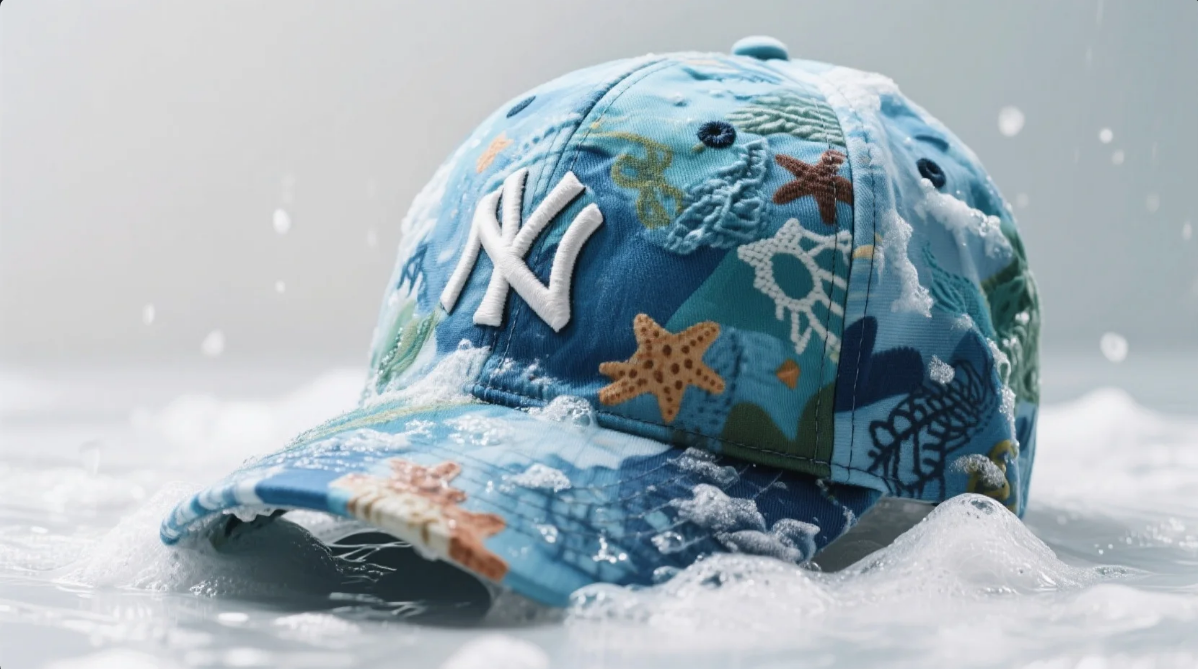
How to Clean a Baseball Cap Made from Ocean Recycled Materials
Baseball caps crafted from ocean recycled materials combine style with sustainability, offering a fashionable way to support environmental conservation. However, cleaning these unique caps requires specific techniques to preserve their integrity and extend their lifespan. This guide will walk you through the step-by-step process of cleaning ocean recycled material baseball caps, ensuring they stay fresh and in top condition.

Before You Start: Preparation and Precautions
Check the Care Label
Gather the Necessary Supplies
Mild, eco-friendly detergent: Opt for a biodegradable, phosphate-free detergent that is gentle on the recycled fabric and environmentally friendly. Avoid using harsh chemicals or bleach, as they can break down the material and reduce its durability.
Soft-bristled brush: A toothbrush or a specialized cap cleaning brush with soft bristles is ideal for scrubbing stains without scratching the fabric.
Basin or sink: You'll need a container large enough to submerge the cap in water.
Mesh laundry bag: If you plan to machine-wash the cap, a mesh bag will protect it from tangling or getting damaged during the wash cycle.
Towel: A clean, absorbent towel for drying the cap.
Remove Loose Debris
Pre-Treating Stains
Identify the Stains
Sweat Stains: These are common on the inner band and top of the cap. Mix one tablespoon of baking soda with two tablespoons of water to create a paste. Apply the paste to the sweat-stained areas, let it sit for 15 - 20 minutes, then gently scrub with a soft-bristled brush.
Food and Beverage Stains: For these stains, apply a small amount of mild liquid detergent directly to the stain. Gently rub the detergent into the fabric using your fingers or the brush, let it soak for 10 - 15 minutes before washing.
Oil and Grease Stains: Sprinkle a small amount of cornstarch or talcum powder on the grease stain to absorb the oil. Let it sit for 10 - 15 minutes, then brush off the powder and proceed with the regular washing process.

Washing Methods
Hand-Washing
Prepare the Cleaning Solution: Fill a basin or sink with lukewarm water—avoid using hot water, as it can damage the recycled fabric and cause it to lose its shape or color. Add a small amount of mild, eco-friendly detergent according to the product's instructions and stir gently to create a soapy solution.
Submerge the Cap: Gently place the cap in the soapy water, ensuring it is fully submerged. Use your hands to swish the cap around, allowing the detergent to penetrate the fabric and lift away dirt and stains. Pay extra attention to the brim, seams, and any stained areas, gently squeezing and rubbing them to remove the grime. However, do not scrub too vigorously or twist the cap, as this can damage its structure.
Soak the Cap: Let the cap soak in the soapy water for 15 - 30 minutes. This soaking time helps to loosen stubborn dirt and stains, making them easier to remove during rinsing.
Machine-Washing
Place in Mesh Bag: If the care label indicates that machine-washing is safe, put the cap inside a mesh laundry bag. This protects the cap from getting caught in the washing machine drum and reduces the risk of stretching or tearing.
Select the Right Cycle: Choose a delicate or gentle cycle on your washing machine. Use cold or lukewarm water to preserve the fabric's integrity and color. Add a small amount of mild, eco-friendly detergent as per the instructions.
Avoid Overloading: Do not overload the washing machine with other clothes. This ensures that the cap has enough space to move around and get clean without being damaged.














